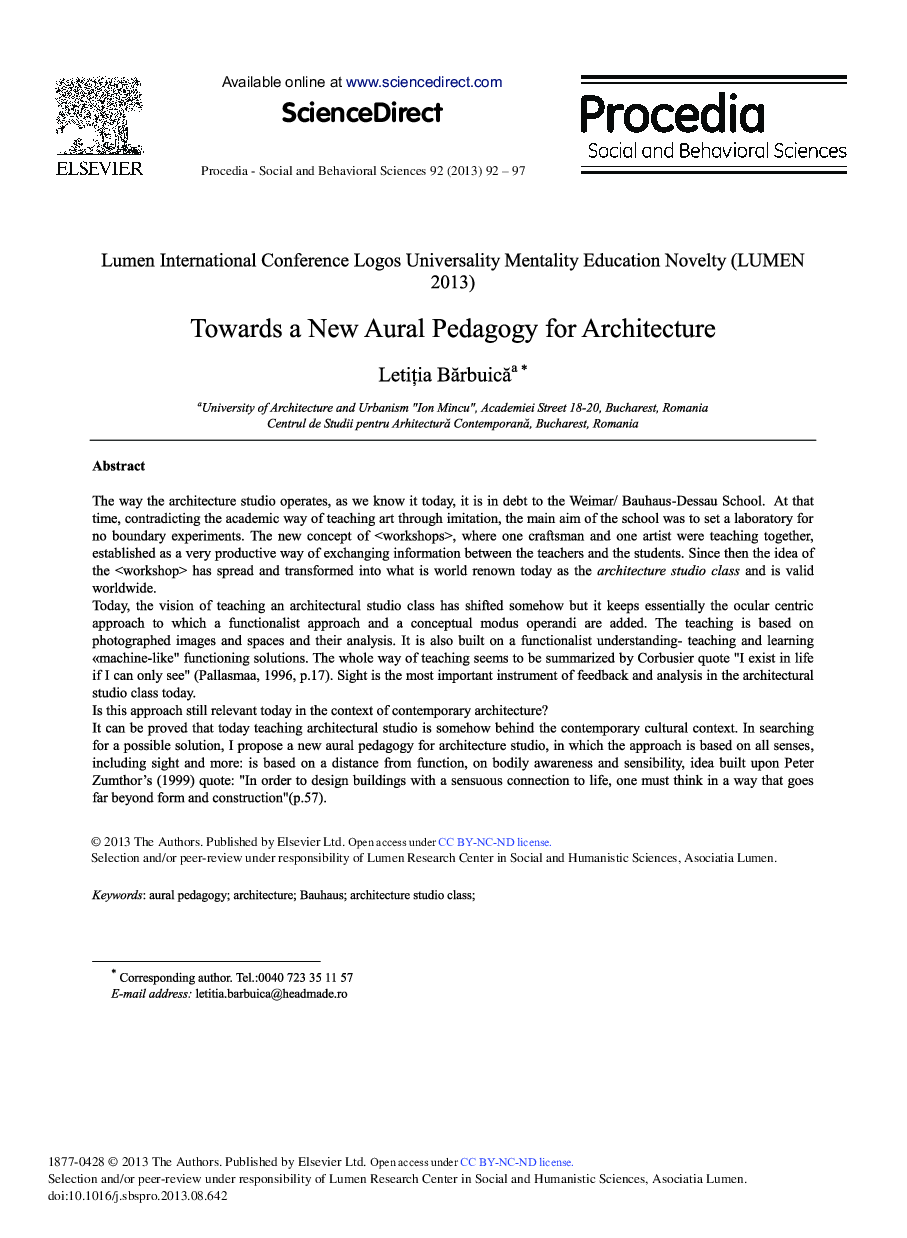| کد مقاله | کد نشریه | سال انتشار | مقاله انگلیسی | نسخه تمام متن |
|---|---|---|---|---|
| 1117898 | 1488467 | 2013 | 6 صفحه PDF | دانلود رایگان |

The way the architecture studio operates, as we know it today, it is in debt to the Weimar/Bauhaus-Dessau School. At that time, contradicting the academic way of teaching art through imitation, the main aim of the school was to set a laboratory for no boundary experiments. The new concept of
Journal: Procedia - Social and Behavioral Sciences - Volume 92, 10 October 2013, Pages 92-97